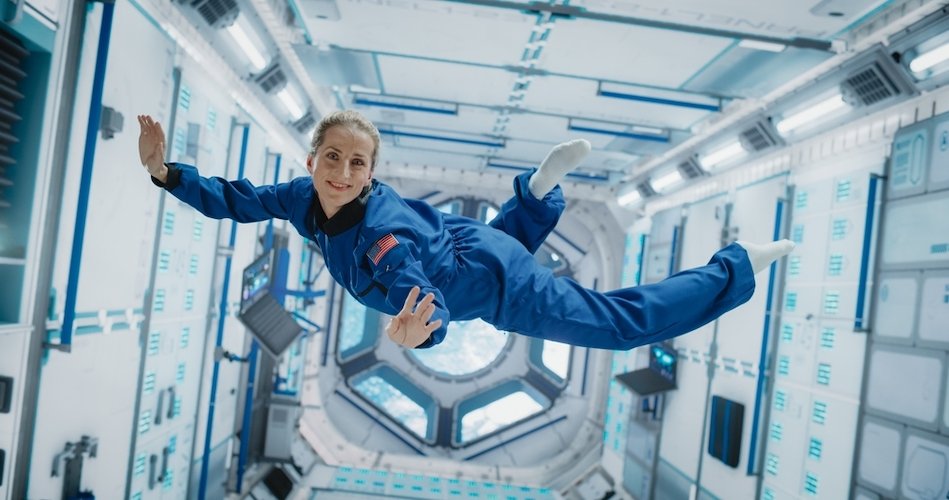Orbital: A Reader’s Elegant Trip Into Space
Surprised to see It’s Always Something in your email box today?
When I began writing this newsletter I envisioned it as a variety of topics: politics, media, books, the arts, and progress in writing my next novel, My Summer As Suicide Saunders.
But then politics became an intense can’t-look-away intruder in our lives and a topic I can’t seem to stop writing about.
So I’ve decided that the way out of my dilemma is to begin publishing each Thursday rather than every other week, and to fill the new space with everything but politics. I hope you stay with me as I go exploring.
Always Get It’s Always Something
Sign up to get the most recent column sent to your inbox for free.
Let’s start this new space with space travel itself
For thousands of years, humans have measured time by the 24 hours required for Earth to circumnavigate the sun. But what if instead of once in 24 hours, the sun rose 16 times a day. In that event, what would we consider “time?”
“Down,” has always been defined as a lower place. “Up” is where clouds and deities live. But without gravity, those definitions no longer apply. Our perspective of what constitutes up or down needs a reset when confronted with neither.
Living bodies, sculpted by billions of years of evolution, function differently in the absence of pressure on fluids, muscles and body parts specifically adapted to Earth’s gravity.
Since Russian Cosmonaut Yuri Gagarin became the first person to venture into space, 64 year ago, questions about how Earth-formed bodies can survive in space haven’t been theoretical.
To find answers, nearly 700 people from 47 countries have spent time off our planet since Gagarin, most of them at the International Space Station.
Bookshelves are lined with countless works detailing every aspect of the space station’s history, its design, results from scientific studies, the people who have been there, the extraordinary photos they’ve sent back.
Samantha Harvey's Orbital Captures the Awe of Space
But it’s unlikely anyone, even those who have actually been in space, has described the experience with the detail, the empathy and as luscious descriptive language as Samantha Harvey in her Booker Prize winning novel, Orbital.
In Orbital’s 207 pages, Harvey has us join a crew of four men and two women from five countries, sharing their freeze-dried meals, using a bicycle and treadmill to preserve muscular function, eliminating their body and other wastes, tethered to a single rope outside the space station, and tethered to friends and families on Earth through voice, video, email and even ham radio, sharing their full range of Earthbound emotions.
To retain a structure of time, they live by a 24-hour clock, even though they see 16 dawns and sunsets. They have headaches and sinus problems because of blocked drainage. They drink each others’ recycled urine. To sleep, they strap themselves into hammocks inside British telephone booth-like boxes so they won’t float away.
No matter how often they see Earth from their windows, they are in awe.
As in this elegant word picture:
“At first they’re drawn to the views at night – the gorgeous encrusting of city lights and the surface dazzle of man-made things. There’s something so crisp and clear and purposeful about the Earth by night, its thick embroidered urban tapestries. Almost every mile of Europe’s coastline is inhabited and the whole continent outlined with fine precision, the cities constellation joined by a fine golden thread of roads.”
A Poetic Window Into Life in Space
It’s not until the near end of the book that we learn what it’s like to arrive at the space station. The perpetual nausea, the need to lie blindfolded until the body fools itself into creating a new way to think of up and down, bumping into things while learning to adjust to optimum floating speed.
What’s true for humans also is true for the mice in the lab boxes. They, too, learn to float, “seemingly with joy” at the experience.
We gaze out the window often, with multiple views of 90% of Earth under the space station’s orbit.
A monstrous typhoon forms near the Philippines. They pass the Kuril Islands “that thread a worn-out path between Japan and Russia. In this indistinct light the islands seem to be a trail of drying footprints.”
“Gran Canaria’s steep radial gorges pile the island up like a sandcastle hastily built, and when the Atlas Mountains announce the end of the desert, clouds appear in the shape of a shark whose tail flips at the southern coast of Spain, whose fin-tip nudges the southern Alps, whose nose will dive any moment into the Mediterranean. Albania and Montenegro are velvet soft with mountain."
They envy other astronauts whose journey to the moon they follow through news reports. They wonder why they are here, in this space, for long durations. For what purpose? To themselves be the lab rats that help guide future others deeper into space, to Mars and beyond.
Orbital is the movie you want to see more than once, the book you want to read more than once. Such is the language. The experience. It doesn’t matter whether you have an interest in things outer space. Revel in an Earth-bound novel by a gifted author.
Comments? Criticism? Contact Joe Rothstein at jrothstein@rothstein.net
Always Get It’s Always Something
Sign up to get the most recent column set to your inbox for free.



What happens when a fun-loving, charismatic, reform-minded Mexican-American billionairess becomes president of the United States and strikes fear in the pocketbooks of a cabal of the rich and powerful?